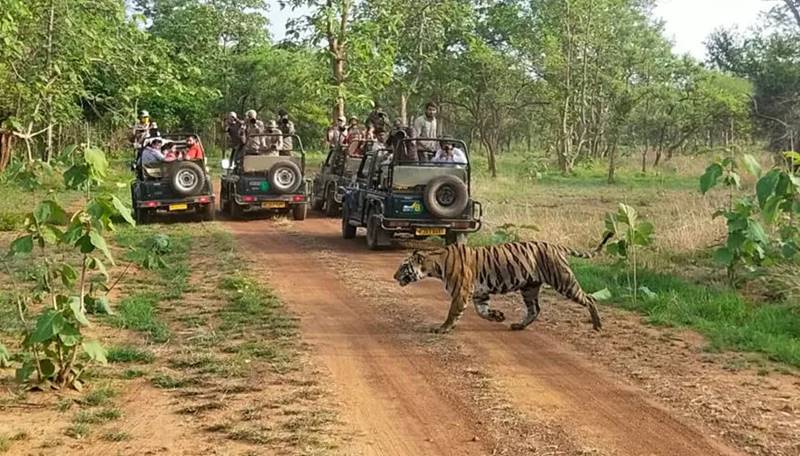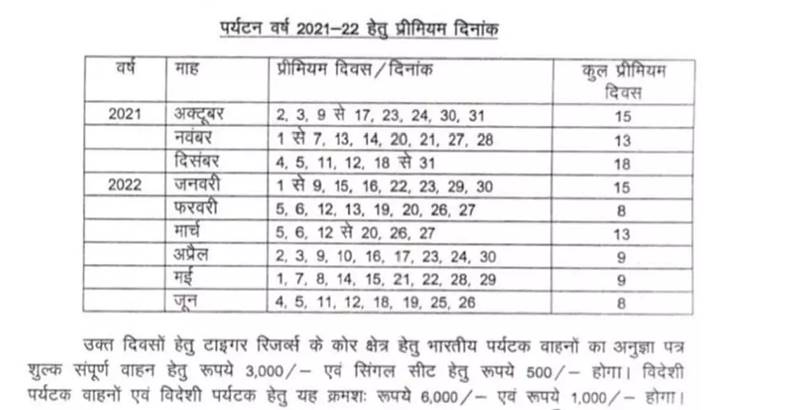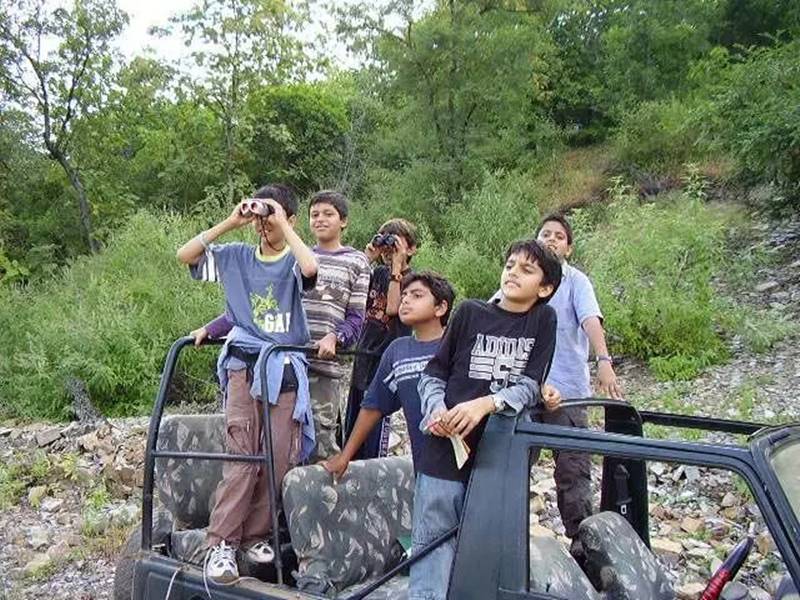Madhya Pradesh hikes entrance fee to tiger reserves; forest guides unhappy with the decision
The entrance fee into tiger reserves in Madhya Pradesh has doubled for Indian tourists, while foreigners will have to pay four times more. This has left wildlife enthusiasts and those dependent on wildlife tourism for their livelihood unhappy.


Currently, there are more than 70 tigers at the Panna Tiger Reserve (file photo).
Panna, Madhya Pradesh
The tiger reserves in Madhya Pradesh, which were closed to visitors for the duration of the monsoon for three months, from June 30, will open up on October 1.
However, tourists now will have to pay more in order to enter the core area of the tiger reserve, announced Alok Kumar, chief conservator of forests (wildlife), Madhya Pradesh. There has been no increase in the entrance fee into the buffer zone and that will remain unchanged. Madhya Pradesh has six tiger reserves. These include Kanha, Pench, Panna, Bandhavgarh, Satpuda and Sanjay tiger reserves.
The entrance fee into the core area of the reserves has been doubled for Indian tourists while foreigners will have to pay four times more. Earlier, the entrance fee into the reserve for a jeep (carrying six tourists, both Indian and foreign) was Rs 1,500. “Now, Indians and foreigners will have to pay Rs 3,000 and Rs 6,000 per jeep respectively to enter the tiger reserve on premium days (holidays). Over and above this, tourists will have to pay Rs 2,500 for the gypsy and Rs 480 as guide charges,” Uttam Kumar Sharma, field operator, Panna Tiger Reserve, told Gaon Connection.
“This should see more people visiting the buffer zone thereby reducing the number of tourists crowding the core area,” Sharma explained.
Also Read: Buffer zones around tiger reserves in Madhya Pradesh open for monsoon tourism
This year, the Madhya Pradesh government allowed tourist activity during the monsoons in the buffer zones of the tiger reserves in an initiative called Buffer Mein Safar (journeys in the buffer zone). Buffer zones of the tiger reserves at Panna, Bandhavgarh, Kanha, Pench and Satpura were kept open to encourage tourists to visit.
“The Akola and Harsa buffer zones of the Panna Tiger Reserve, received a lot of enthusiastic tourists,” Sharma said, adding that many tigers were sighted in these areas.

‘Price hike a bad idea’
However, the decision to hike the entrance fee into the tiger reserves has not gone down well with many other wildlife enthusiasts.
“This will adversely impact wildlife tourism,” Shyamendra Singh, conservationist and eco-tourism professional from Panna, told Gaon Connection.
Currently, there are more than 70 tigers at the Panna Tiger Reserve that is spread over approximately 1,598 square kilometres (sq kms). The core area covers 576 sq kms while the buffer zone covers 1,022 sq kms.
“Businesses are vulnerable due to the COVID19 pandemic and hiking the entrance fee so much and so suddenly is definitely not a good idea,” Singh said. “It looks like wildlife tourism will now become the preserve of only the rich, and middle class people won’t even be able to dream of it,” he added.
Also Read: The monsoon patrol of the Panna Tiger Reserve is incredibly challenging for its forest guards
Instead of helping, the price hike is going to have a devastating impact on all those dependent on tourism in the area, Singh pointed out.
“Due to the pandemic, for the past year and a half hotels are lying empty. Just keeping them up and running has been a drain. Resorts that serve PTR are also doing dismal business. How will increasing the entrance fee so much help anyone,” he demanded to know.
“With the rise in the entrance fee, there will be a drop in the number of tourists. And there is no corresponding increase in the guide or gypsy fees,” Manoj Kumar Dwivedi, who has been awarded for his excellent services as a tourist guide at the Panna Tiger Reserve, told Gaon Connection.
Also Read: Tiger Dad wins custody of his cubs at Panna Tiger Reserve

Impact on livelihood
Many of the local inhabitants who depend on the Panna Tiger Reserve for their income are unhappy and disgruntled with the sudden decision to hike the entrance fee into the tiger reserves in peak tourist season.
They argue that the tiger reserves are in places that are predominantly inhabited by tribal communities many of whom are dependent on wildlife tourism for their livelihoods. A price hike will see the number of tourists plummeting.
“The local people will get nothing out of this hike. It makes no sense to raise the fee at a time when tourist footfall is at its highest, and there are barely any foreigners visiting the country now,” Dwivedi said. Instead of hiking the price and keeping people away, the state government should be giving incentives to tourists to come here in greater numbers, he said.
“Tiger reserves are there to conserve wildlife, increase awareness amongst people about the importance of Nature and foster empathy in the public towards animals. Reserves are not there to fill the government exchequer,” Singh said.
Also Read: Heera and Panna, the inseparable tiger siblings of Panna Tiger Reserve, part ways
“If the price hike keeps tourists away, what happens to our livelihood,” wondered Puneet Sharma, another guide at the Panna Tiger Reserve.
The hopes of all those dependent on the tiger reserves for their livelihood are pinned on the upcoming tourist season. And particularly on Indian tourists as there is little chance that there will be many foreigners visiting anytime soon.
According to data on the Panna Tiger Reserve website, in 2018-19, there were 28,931 Indian tourists and 6,548 foreign tourists who visited the reserve. In 2019-20, the numbers had come down to 23,938 and 4,963 respectively. In 2020-21, the number of Indian visitors to the reserve had gone up to 32,588 while the number of foreigners was 48 only.

